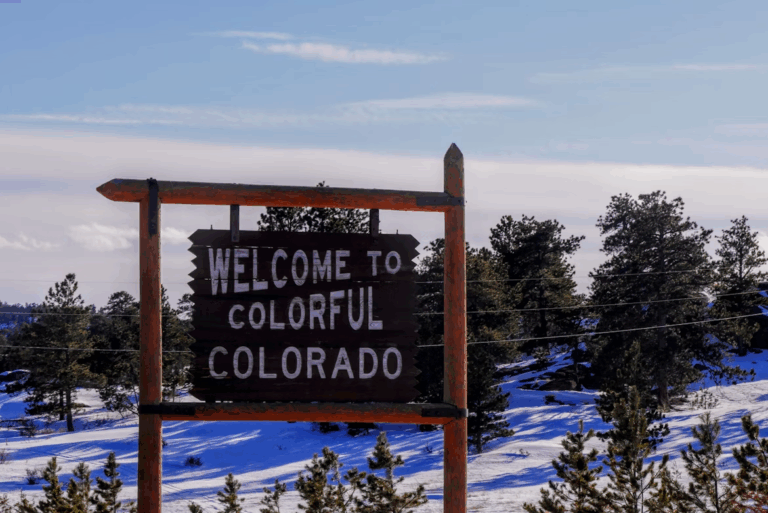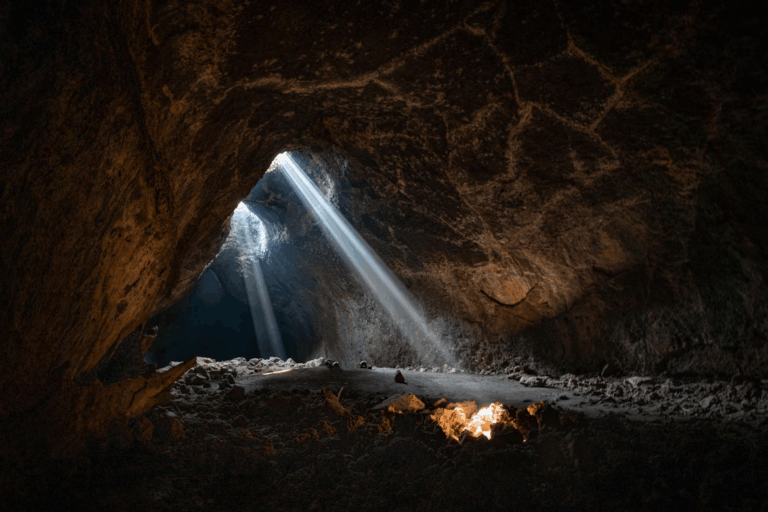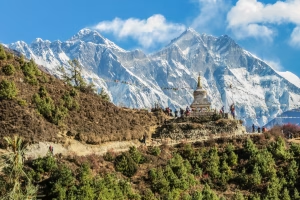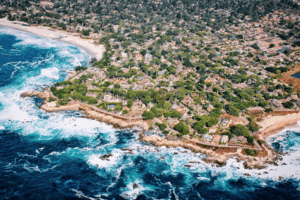
Hidden waterfalls in US National Parks offer some of America’s most spectacular and secluded natural wonders, far from the crowded main trails that attract millions of visitors each year. These secret cascades within hidden waterfalls in US National Parks provide adventurous hikers with pristine swimming holes, dramatic cliff drops, and ethereal mist-shrouded pools that rival any famous waterfall destination worldwide.
While popular parks showcase their headline attractions, the most rewarding hidden waterfalls in US National Parks experiences often lie just beyond the beaten path. These magnificent hidden waterfalls in US National Parks require a bit more effort to reach, but reward visitors with solitude, incredible photography opportunities, and that magical sense of discovery that makes outdoor adventures truly unforgettable.
According to Daytrip Nomad’s comprehensive guide, the most spectacular hidden waterfalls in US National Parks combine accessibility with pristine natural beauty, creating perfect destinations for photographers and adventure seekers who seek authentic hidden waterfalls in US National Parks experiences.
From coastal waterfalls that plunge directly onto sandy beaches to alpine cascades tucked away in remote mountain valleys, America’s national parks harbor dozens of secret waterfalls waiting to be explored. The eight hidden waterfalls in US National Parks featured here represent the crown jewels of off-trail waterfall hiking, each offering unique natural settings and compelling reasons to venture beyond the typical tourist routes toward these spectacular hidden waterfalls in US National Parks destinations.
What Makes These Hidden Waterfalls in US National Parks Special?
The hidden waterfalls in US National Parks featured in this comprehensive guide share several characteristics that set them apart from mainstream destinations. These pristine hidden waterfalls in US National Parks maintain their pristine beauty precisely because they require moderate hiking effort, permit systems, or local knowledge to access safely.
Each waterfall offers distinct natural features – from slot canyon narrows to limestone grottos, coastal bluffs to alpine cirques. Many hidden waterfalls in US National Parks provide excellent swimming opportunities in crystal-clear pools, while others showcase rare geological formations or unique ecosystems that photographers and nature lovers prize when exploring hidden waterfalls in US National Parks.
Most importantly, these exceptional hidden waterfalls in US National Parks offer tranquility and authentic wilderness experiences increasingly rare in our crowded national parks system. Outside Magazine highlights how these secluded swimming holes and waterfall destinations provide refreshing escapes from busy tourist corridors, making hidden waterfalls in US National Parks the perfect remedy for overcrowded attractions.
1. Burney Falls, California

Theodore Roosevelt famously called Burney Falls the “Eighth Wonder of the World,” and this 129-foot cascade continues to mesmerize visitors with its ethereal beauty. Located in McArthur-Burney Falls Memorial State Park, this waterfall flows year-round thanks to underground springs that maintain consistent water volume regardless of seasonal rainfall.
The falls create a natural amphitheater where mist perpetually rises from the plunge pool, supporting unique moss gardens and fern colonies along the surrounding basalt cliff faces. Unlike many seasonal waterfalls, Burney Falls maintains its full dramatic impact throughout the year, making it one of California’s most reliable hidden waterfalls in US National Parks regions and a must-visit destination for anyone seeking authentic hidden waterfalls in US National Parks experiences.
Why It’s Special: The constant flow from underground springs creates an otherworldly atmosphere with perpetual mist and lush vegetation. The relatively short 1.3-mile loop trail keeps crowds manageable while providing excellent viewpoints from multiple angles.
Access Details: Located off Highway 89, the waterfall requires a moderate hike through old-growth forest. The trail includes stairs and can be slippery near the falls due to constant mist.
2. Iron Creek Falls, Washington
Deep within the Gifford Pinchot National Forest, Iron Creek Falls represents the Pacific Northwest’s quintessential hidden waterfall experience. This 40-foot cascade tumbles through a moss-draped canyon where towering Douglas firs and western hemlocks create a natural cathedral setting.
The waterfall flows strongest during spring snowmelt and autumn rains, but maintains a graceful ribbon of water throughout most of the year. Photographers particularly prize the dappled sunlight that filters through the forest canopy, creating ever-changing light patterns on the falls and surrounding rock faces. This makes Iron Creek Falls one of the most photogenic hidden waterfalls in US National Parks regions, showcasing why hidden waterfalls in US National Parks attract serious landscape photographers.
Trail Experience: The 2.5-mile round-trip hike follows an old logging road before branching onto a narrow forest trail. The final approach requires careful footing on potentially slippery rocks, but the payoff is one of Washington’s most photogenic hidden waterfalls in US National Parks areas, demonstrating why hidden waterfalls in US National Parks reward patient hikers.
Best Visiting Times: May through October offers the most reliable trail conditions, though the falls are most dramatic during high water periods in late spring and early fall.
3. Hanging Falls, Colorado

Near Glenwood Springs, Hanging Falls showcases Colorado’s surprising waterfall diversity beyond its famous alpine lakes and snow-capped peaks. This multi-tiered cascade drops approximately 100 feet over unique red sandstone formations, creating a series of pools and smaller drops that hikers can explore among Colorado’s premier hidden waterfalls in US National Parks regions.
The 4-mile round-trip hike follows Hanging Lake Creek through a narrow canyon where the trail literally clings to cliff faces in several sections. The engineering marvel of the trail itself adds adventure to reaching one of the most spectacular hidden waterfalls in US National Parks, though hikers should be prepared for exposure and potentially crowded conditions during peak season.
Geological Significance: The falls flow over Leadville Limestone formations that have been carved into intricate shapes by thousands of years of water flow. The mineral-rich water creates travertine deposits that continue building the unique terraced pools system.
Permit Requirements: Advance reservations are mandatory year-round through the Hanging Lake Permit System. This requirement helps preserve the fragile ecosystem while maintaining the quality experience that makes this one of Colorado’s premier hidden waterfalls in US National Parks areas. The Travel’s guide to hidden places emphasizes how permit systems help protect these sensitive environments.
📸 Image Note:
The image above features North Clear Creek Falls, another underrated gem among Colorado’s lesser-known waterfalls. Unlike the popular Hanging Lake, North Clear Creek Falls is located in the San Juan Mountains region near Creede and offers dramatic views with easier access via a short walk from the parking area. Though lesser visited, it stands as one of the most scenic and accessible hidden waterfalls in Colorado.
4. Hamilton Pool Preserve, Texas
Hamilton Pool Preserve protects one of Texas’s most unique geological wonders – a 50-foot waterfall that plunges from a limestone overhang into a jade-green swimming hole surrounded by towering cypress trees. The collapsed grotto creates a natural amphitheater that feels more like a cenote from Mexico’s Yucatan Peninsula than a typical Texas landscape, making it one of the most unusual hidden waterfalls in US National Parks systems.
The waterfall flows year-round from Hamilton Creek, though the volume varies significantly with seasonal rainfall. During dry periods, the falls reduce to a gentle trickle, while heavy rains can create a thunderous cascade that echoes dramatically within the limestone chamber. This variability makes Hamilton Pool one of the most dynamic hidden waterfalls in US National Parks to visit multiple times.
Swimming Experience: The emerald pool maintains comfortable temperatures for swimming during warmer months, though visitors should be aware of occasional blue-green algae blooms that may temporarily restrict water contact. This swimming opportunity sets Hamilton Pool apart from many other hidden waterfalls in US National Parks.
Conservation Note: This remarkable destination requires advance reservations to limit environmental impact on the fragile limestone ecosystem. The preserve represents successful collaboration between private landowners and conservation organizations to protect unique hidden waterfalls in US National Parks regions.
5. Kanarra Falls, Utah

Located near Zion National Park, Kanarra Falls offers a taste of the famous Narrows experience on a smaller, more manageable scale. The trail involves hiking through shallow creek water and a narrow slot canyon to reach three distinct waterfalls ranging from 20 to 100 feet in height, making it one of the most adventurous hidden waterfalls in US National Parks areas.
The journey through the slot canyon provides as much adventure as the waterfalls themselves. Hikers wade through ankle-deep water while towering sandstone walls rise hundreds of feet overhead, creating a cathedral-like atmosphere that filters sunlight into ethereal beams. This unique approach makes Kanarra Falls among the most memorable hidden waterfalls in US National Parks to experience.
Technical Requirements: The hike requires crossing private property and paying a small access fee. Waterproof footwear is essential, and hikers should be prepared for potentially swift current during spring runoff or after thunderstorms.
Photography Tips: The narrow canyon creates dramatic lighting conditions, with the best photography opportunities occurring during midday when sunlight penetrates deepest into the slot. These conditions make Kanarra Falls one of the most photogenic hidden waterfalls in US National Parks regions, offering Instagram-worthy shots for adventurous photographers.
6. Avalanche Lake Falls, Glacier National Park
Deep within Glacier National Park’s wilderness, Avalanche Lake Falls represents the quintessential alpine waterfall experience among hidden waterfalls in US National Parks. Multiple cascades plunge approximately 500 feet from hanging valleys into the pristine turquoise waters of Avalanche Lake, fed by snowmelt from glaciers perched high above, creating one of Montana’s most spectacular hidden waterfalls in US National Parks.
The 4.6-mile round-trip hike follows Avalanche Creek through old-growth cedar and hemlock forests before opening into the dramatic cirque where the lake sits surrounded by towering peaks. The falls are most impressive during early summer when snowmelt reaches peak flow, creating thunderous cascades that can be heard from miles away, demonstrating why hidden waterfalls in US National Parks provide such powerful sensory experiences.
Wildlife Opportunities: The trail offers excellent chances to observe mountain goats, black bears, and diverse bird species. Early morning and evening hikes provide the best wildlife viewing opportunities while avoiding peak tourist crowds.
Seasonal Considerations: Snow typically blocks trail access until late June, and the falls reach maximum flow during July and August. Autumn offers spectacular foliage colors and fewer crowds, though water levels may be significantly reduced.
7. Alamere Falls, California

Alamere Falls represents one of the rarest waterfall types in North America – a tidefall that cascades directly onto a sandy ocean beach. Located in Point Reyes National Seashore, this 40-foot waterfall creates a surreal juxtaposition of freshwater cascade and Pacific Ocean waves.
The 8.4-mile round-trip hike follows coastal bluffs with spectacular ocean views before descending to the secluded Wildcat Beach where the falls meet the sea. The waterfall flows year-round but becomes most dramatic during winter and spring rainy seasons when Alamere Creek reaches full volume.
Unique Features: Tidal conditions dramatically affect the waterfall’s appearance, with high tides creating a temporary lagoon at the falls’ base while low tides expose tide pools and additional beach area for exploration.
Access Challenges: The final descent to the beach requires careful navigation down unstable bluff faces. Recent storm damage has made access more challenging, and hikers should check current conditions with park rangers before attempting the hike.
8. Little River Falls, Alabama

Little River Canyon National Preserve protects one of the Southeast’s most spectacular waterfall systems, where Little River Falls plunges 45 feet over sandstone ledges into crystal-clear swimming holes. Located atop Lookout Mountain, this destination offers both dramatic waterfall views and excellent swimming opportunities.
The falls flow year-round, fed by Little River’s surprisingly consistent water levels. Below the main cascade, a series of smaller falls and deep pools provide excellent swimming during warmer months, making this one of the few hidden waterfalls in US National Parks areas where visitors can safely enjoy water activities.
Regional Significance: Little River Canyon represents one of the deepest canyons east of the Mississippi River, carved through layers of sandstone over millions of years. The unique geology creates multiple waterfall systems throughout the preserve, making it a hotspot for hidden waterfalls in US National Parks and preserve systems.
Swimming Safety: The swimming holes below the falls maintain comfortable temperatures from late spring through early fall, though visitors should exercise caution around swift currents and slippery rocks near the waterfall base. This combination of swimming and waterfall viewing makes it unique among hidden waterfalls in US National Parks destinations.
Essential Planning Tips for Hidden Waterfalls in US National Parks Adventures
Successfully experiencing these hidden waterfalls in US National Parks requires careful planning and preparation beyond typical day hiking considerations. Many of these destinations have specific access requirements, seasonal limitations, or technical challenges that can catch unprepared visitors off-guard.
Permit and Reservation Systems: Several hidden waterfalls in US National Parks require advance permits or reservations, particularly Hamilton Pool Preserve and Hanging Falls. Popular destinations may book weeks or months in advance during peak seasons, so early planning is essential.
Weather and Seasonal Considerations: Waterfall conditions vary dramatically with seasonal precipitation patterns. Spring snowmelt and autumn rains typically provide the most impressive water flow, while late summer and winter may reduce some falls to mere trickles.
Safety Equipment: Many hidden waterfalls in US National Parks trails involve river crossings, steep descents, or exposure to falling rocks. Essential safety equipment includes proper footwear with good traction, first aid supplies, and communication devices for remote locations.
Photography and Documentation Ethics

These hidden waterfalls in US National Parks provide incredible photography opportunities, but responsible documentation helps preserve these special places for future generations. The rise of social media has dramatically increased visitation to formerly secret locations, sometimes overwhelming fragile ecosystems with unprepared visitors.
Leave No Trace Principles: Follow established trails, pack out all waste, and avoid disturbing vegetation or wildlife for photography purposes. Many waterfall environments support rare or endangered species that can be easily impacted by human presence.
Sharing Location Information: Consider the potential consequences before sharing exact location details or GPS coordinates on social media platforms. General region information allows others to research and plan appropriately while avoiding overcrowding sensitive areas.
Water Safety and Swimming Guidelines for Hidden Waterfalls in US National Parks
Several of these hidden waterfalls in US National Parks offer tempting swimming opportunities, but natural swimming holes present unique safety challenges that visitors must understand before entering the water.
Water Quality Assessment: Even pristine-looking natural pools can harbor harmful bacteria, particularly during warm weather or after heavy rainfall events. Research current water quality conditions and consider potential health risks before swimming.
Current and Depth Awareness: Waterfall plunge pools often have unpredictable currents, underwater obstacles, or sudden depth changes that aren’t visible from the surface. Always enter water gradually and never dive into unknown depths.
Temperature Considerations: Mountain and coastal waterfall pools typically maintain cold temperatures year-round, which can quickly lead to hypothermia even during warm weather. Plan for appropriate thermal protection and limit exposure time accordingly.
Conservation and Future Access

The popularity of hidden waterfalls in US National Parks continues growing as outdoor recreation expands and social media showcases previously unknown destinations. This increased attention brings both opportunities and challenges for conservation efforts.
Positive Impact Opportunities: Increased visitation can generate support for conservation funding and park maintenance programs. Many hidden waterfalls in US National Parks locations benefit from improved trail maintenance and safety measures as they gain popularity.
Managing Overcrowding: Popular hidden waterfalls in US National Parks may eventually require permit systems, visitor quotas, or seasonal restrictions to protect fragile ecosystems. Understanding and supporting these management decisions helps preserve access for future generations.
Volunteer and Stewardship Programs: Many park systems offer volunteer opportunities for trail maintenance, invasive species removal, and visitor education programs. Participating in these efforts helps protect the hidden waterfalls in US National Parks you’ve enjoyed exploring.
Beyond the Main Trails: Finding Your Own Hidden Gems
While these eight waterfalls represent some of America’s most spectacular hidden cascades, countless other secret waterfalls await discovery throughout the national parks system. Developing skills to find and safely explore lesser-known destinations opens unlimited opportunities for unique outdoor experiences with hidden waterfalls in US National Parks regions.
Research Techniques: Topographic maps, geological surveys, and local hiking groups provide valuable information about potential waterfall locations. Look for steep elevation changes, permanent water sources, and less-developed trail systems.
Local Knowledge Networks: Park rangers, local hiking clubs, and outdoor gear shops often possess detailed knowledge about hidden waterfall locations and current access conditions. Building relationships with these information sources can unlock incredible opportunities.
Seasonal Exploration: Many hidden waterfalls in US National Parks only flow during specific seasons or weather conditions. Exploring the same regions during different times of year can reveal temporary cascades that few visitors ever witness.
Conclusion

These eight hidden waterfalls in US National Parks represent the pinnacle of off-trail waterfall experiences, each offering unique natural beauty, adventure, and solitude increasingly rare in our crowded national parks. From Theodore Roosevelt’s “Eighth Wonder of the World” at Burney Falls to the rare tidefall phenomenon at Alamere Falls, these destinations reward adventurous hikers with unforgettable experiences.
The effort required to reach these hidden waterfalls – whether through moderate hikes, permit systems, or technical challenges – helps preserve their pristine character while filtering out casual visitors unprepared for genuine wilderness experiences. This natural selection process ensures that those who make the journey truly appreciate the spectacular natural beauty they’ve worked to reach.
Planning successful hidden waterfall adventures requires research, preparation, and respect for the fragile ecosystems that support these natural wonders. By following Leave No Trace principles, supporting conservation efforts, and sharing these special places responsibly, we can ensure future generations will continue discovering the magic of America’s secret cascades.
Whether you’re seeking dramatic photography opportunities, refreshing swimming holes, or simply the peace that comes from experiencing pristine natural beauty away from crowds, these hidden waterfalls in US National Parks provide the perfect escape from ordinary outdoor experiences. The memories created at these special places will inspire continued exploration and deeper appreciation for America’s incredible natural heritage.
For those inspired to explore more of America’s natural wonders, consider expanding your adventures to include the ultimate travel bucket list of 10 national parks you must see, or discover additional waterfall destinations by exploring hidden waterfalls in Asia for international adventure inspiration.







